Mysterious Balkåkra Disc – Rare Strange Bronze Artifact Found In A Bog
Ellen Lloyd - AncientPages.com - A strange artifact was found in 1847 in a bog in Balkåkra a village in south of Skåne, near the town Ystad, Sweden. The object suggests some form of ritual use within the religion of the Bronze Age.
A local teacher sent the find by steamboat to the Museum of National Antiquities in Stockholm. There is no further information available about the find circumstances, and the exact find place has never been located.
There are different opinions regarding its original purpose. It remains unclear whether this was an ancient drum, a sun altar, a gong, a throne, or something else. An identical bronze object was found in a two-meter-deep sandpit at Hasfalva (then called Haschendorf) near Sopron in northern Hungary, in 1913.
Both objects are the only of their kind found in the world and both objects are approximately 28 cm high and weigh around 4,700 grams.
It is likely that they were manufactured by the same craftsman in the same workshop (one of the first examples of serial production?), located somewhere in Central Europe, probably the Donau area in the early Bronze Age (1500 years BC).
The Balkåkra artifact. It consists of a bronze disc ca. 41 cm in diameter and resting on a bronze frame, height ca. 28 cm. It was found in a peat bog in Balkåkra Parish in southern Sweden and is dated to the Early Bronze Age, approx. 1500 – 1300 BC. Photo credits: G. Jansson, Museum of National Antiquities, Stockholm
The object from Balkåkra consists of a dish-shaped disc with zigzag-lines, similar to a sun depiction. It is attached to an open-work frame ending with wheel symbols that signify movement, and the discs have been interpreted as symbols of the sun.
The frame is composed of 10 parts that are put together with rivets. On each module, there are lines or dots. They show the place of the module in the structure.
See also:
The Bimaran Casket – Rare Golden Artifact Found In Ancient Stupa
Mysterious Teotihuacan ‘Host’ Figurines From Metepec, Mexico
Amazing ‘Guennol Lioness’ – One Of The Greatest Ancient Works Of Art Of All Time
Scandinavian archaeologists date the objects to c. 1500 BC while their Hungarian colleagues date them to 1000-800 BC. First metal analyses of the objects were made in 1985.
Metal analyses of the Balkåkra disc resulted in the values 89 % copper and 10 % tin, with silver, lead and iron together comprising the remaining 1 %; the results were about the same for the disc from Hasfalva, Hungary.
What is unique about these two objects is their size and appearance. They pose a mystery because we do not know function in the prehistoric society in which they were created. Both objects were found upside down, such that the disc lay at the bottom with the frame resting on it and the wheels facing upwards. It is presumed that this was the position used when the objects were stored or transported.
Many archaeologists have suggested the Balkåkra disc was a drum used in the Bronze-Age cult of the Sun, but for now, these are mere speculations and we do not know the true purpose of this enigmatic object.
Written by Ellen Lloyd – AncientPages.com
Copyright © AncientPages.com All rights reserved. This material may not be published, broadcast, rewritten or redistributed in whole or part without the express written permission of AncientPages.com
More From Ancient Pages
-
 Why Did Neolithic Make Us Taller And More Intelligent But More Prune To Heart Disease?
Archaeology | Apr 8, 2022
Why Did Neolithic Make Us Taller And More Intelligent But More Prune To Heart Disease?
Archaeology | Apr 8, 2022 -
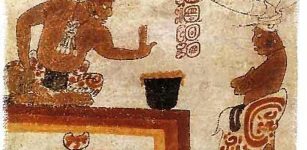 Ancient Maya Sacred Groves Of Cacao Trees – Located
Archaeology | Jan 31, 2022
Ancient Maya Sacred Groves Of Cacao Trees – Located
Archaeology | Jan 31, 2022 -
 Missing Lines From Epic Of Gilgamesh Shed New Light On Humbaba
Artifacts | Oct 9, 2015
Missing Lines From Epic Of Gilgamesh Shed New Light On Humbaba
Artifacts | Oct 9, 2015 -
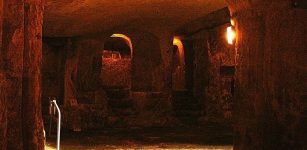 Magnificent St. Paul’s Catacombs – Largest Underground Roman Cemetery In Malta
Featured Stories | Aug 28, 2019
Magnificent St. Paul’s Catacombs – Largest Underground Roman Cemetery In Malta
Featured Stories | Aug 28, 2019 -
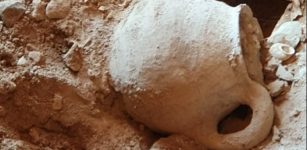 Cave 53 In Qumran Region In Judean Desert Reveals More Secrets
Archaeology | Feb 28, 2022
Cave 53 In Qumran Region In Judean Desert Reveals More Secrets
Archaeology | Feb 28, 2022 -
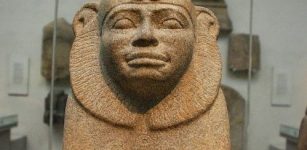 Taharqa – The Most Powerful Of The Black Pharaohs
Featured Stories | Jan 29, 2016
Taharqa – The Most Powerful Of The Black Pharaohs
Featured Stories | Jan 29, 2016 -
 Ancient Roman Shipwreck Marausa 2 With Intact Cargo Recovered Off The Coast Of Sicily
Archaeology | Oct 23, 2023
Ancient Roman Shipwreck Marausa 2 With Intact Cargo Recovered Off The Coast Of Sicily
Archaeology | Oct 23, 2023 -
 Dracula: Cruel, Ruthless And Bloodthirsty Ruler But Not A Vampire
Featured Stories | Sep 12, 2023
Dracula: Cruel, Ruthless And Bloodthirsty Ruler But Not A Vampire
Featured Stories | Sep 12, 2023 -
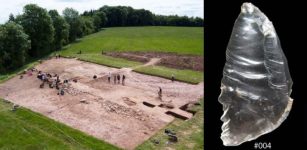 Prehistoric Brits Used Rare Rock Crystals To Mark Burial Sites – New Study
Archaeology | Aug 10, 2022
Prehistoric Brits Used Rare Rock Crystals To Mark Burial Sites – New Study
Archaeology | Aug 10, 2022 -
 Illness And Death Of The Edward Of Woodstock ‘Black Prince’ Changed The Course Of English History
Archaeology | Dec 21, 2022
Illness And Death Of The Edward Of Woodstock ‘Black Prince’ Changed The Course Of English History
Archaeology | Dec 21, 2022 -
 Legend Of The Blue Men Of Minch: Were They Mythological Creatures Or Real Men?
Featured Stories | May 13, 2016
Legend Of The Blue Men Of Minch: Were They Mythological Creatures Or Real Men?
Featured Stories | May 13, 2016 -
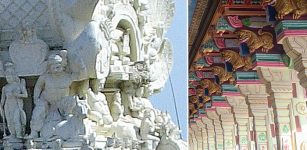 Ramanathaswamy Temple Has Spectacular Corridors With Over 4000 Pillars
Featured Stories | Jun 9, 2021
Ramanathaswamy Temple Has Spectacular Corridors With Over 4000 Pillars
Featured Stories | Jun 9, 2021 -
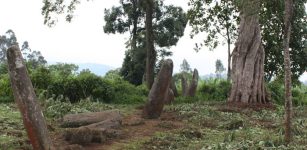 Ancient Stone Monoliths In Ethiopia Are 1,000 Years Older Than Previously Thought
Archaeology | Dec 11, 2021
Ancient Stone Monoliths In Ethiopia Are 1,000 Years Older Than Previously Thought
Archaeology | Dec 11, 2021 -
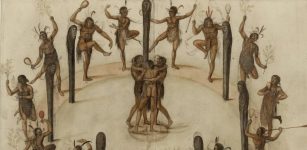 Archaeologists Have A Lot Of Dates Wrong For North American Indigenous History
Archaeology | May 4, 2020
Archaeologists Have A Lot Of Dates Wrong For North American Indigenous History
Archaeology | May 4, 2020 -
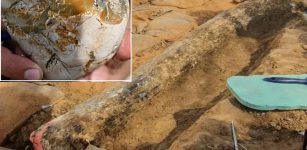 A Half-A Million-Year-Old Well-Preserved Elephant Tusk Unearthed In Israel
Archaeology | Sep 2, 2022
A Half-A Million-Year-Old Well-Preserved Elephant Tusk Unearthed In Israel
Archaeology | Sep 2, 2022 -
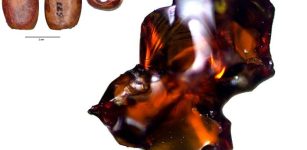 Earliest Baltic Amber In Western Europe Found On The Iberian Peninsula 5,000 Years Ago
Archaeology | Oct 21, 2023
Earliest Baltic Amber In Western Europe Found On The Iberian Peninsula 5,000 Years Ago
Archaeology | Oct 21, 2023 -
 Native Americans And European Legends Tell Peculiar Beings From The Sky Still Live On The Earth
Featured Stories | May 16, 2018
Native Americans And European Legends Tell Peculiar Beings From The Sky Still Live On The Earth
Featured Stories | May 16, 2018 -
 1,700-Year-Old Underground Temple Of Mithras Unearthed In East Anatolia, Turkey
Archaeology | May 10, 2017
1,700-Year-Old Underground Temple Of Mithras Unearthed In East Anatolia, Turkey
Archaeology | May 10, 2017 -
 Ancient Roman Wine Was Spicy And Smelled Like Toast – Dolia Vessels Reveal
Archaeology | Jan 25, 2024
Ancient Roman Wine Was Spicy And Smelled Like Toast – Dolia Vessels Reveal
Archaeology | Jan 25, 2024 -
 Pre-Columbian Americans Mastered Electricity – Ancient Inscription And Document Reveal Proof Of Advanced Ancient Technology
Ancient Technology | Feb 4, 2018
Pre-Columbian Americans Mastered Electricity – Ancient Inscription And Document Reveal Proof Of Advanced Ancient Technology
Ancient Technology | Feb 4, 2018

